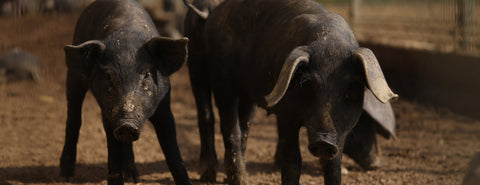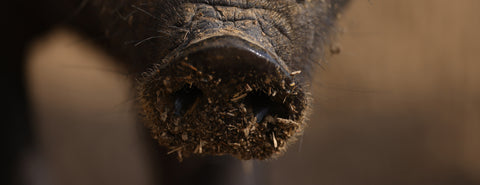The creation of the Pfeiffer, an autochthonous Croatian breed
The Black Slavonian Pig is an autochthonous Croatian breed created in the 1860s by crossbreeding on Pfeiffer’s estates, which is why it was called the Pfeiffer.
Half-brothers Karl Leopold and Felix Pfeiffer pooled the capital acquired from the pig trade in Hungary, and from the mid-19 th century they bought up parts of the manorial estate of Ladislav and Bela Adamović Čepinski. Immediately, strong agricultural production began on these estates/wastelands of (Lower and Upper) Orlovnjak and Ovčara.
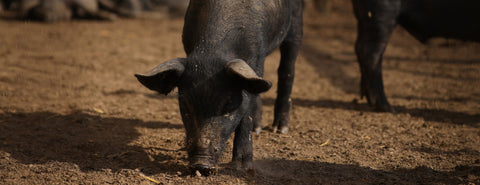
Orlovnjak Estate
There they had pig feedlots with various residential and farm buildings. On these wastelands, they crossed sows of Lasasta mangulica breed with imported boars of the black Berkshire, Poland China and Cornwall breeds.
This is how the Black Slavonian Pig with a short body and ash-colored skin covered with medium-long bristles was created. Its quality was manifested in early maturity, fertility and better fleshiness.
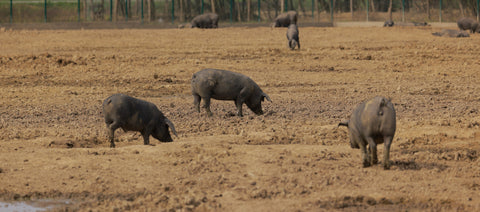
Who was Karl Leopold Baron Pfeiffer?
He was born in 1834 in Sopron, a town in the northwest of today’s Republic of Hungary, and died in Vienna on 27 March 1913. He was transported to Osijek and buried in the family chapel at the Donji grad Cemetery.
He came from a wealthy German merchant family, which dealt exclusively in the pig trade. He came to live in Osijek from Hungary in the 1850s. For many years, he was the head of the Vuka River Regulation Cooperative. In 1903, he received hereditary nobility and baronetcy from Emperor Franz Joseph I.
Trade and cultivation are an inseparable link
In addition to raising pigs, the Pfeiffers also raised Podolian cattle and were engaged in trade.
In particular, they focused on the trade of quality breeds, the so-called Pfeiffer pigs. They were shipped to markets throughout the Austro-Hungarian Monarchy (Hungary, Austria) and Prussia, i.e. to the German market.
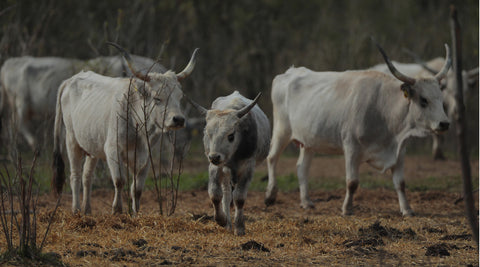
The Pfeiffer pig was particularly in demand on the mentioned markets, because in the second half of the 19 th century, when livestock diseases were common, it was extremely resistant to these diseases and had excellent quality meat, extremely suitable for processing traditional dried meat products.
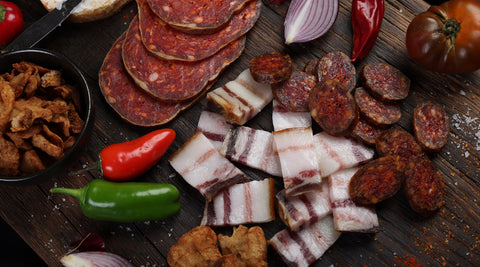
European and global recognition
The quality, value and recognizability of this autochthonous Croatian breed are confirmed by awards at world and international expositions (fairs), where one specimen of each breed was sent.
That is how the breed was noticed and praised as early as 1873 in Vienna at the World’s Fair, and in 1885, at the International
Exposition in Budapest, the Pfeiffer pig breed was particularly distinguished and awarded.
It not only received recognition but also a cash prize worth 700 francs in gold. Returning to Osijek with this prestigious award, the Pfeiffers donated that sum of money to the City of Osijek with the aim of using it to help the poor people of the city.
The Pfeiffer pig among the sculptures of indigenous domestic animals
The fact that in 1899 the famous sculptor Robert Frangeš Mihanović stayed on the property of Dragutin (Karl) Leopold Baron Pfeiffer in Orlovnjak, speaks of the fame of the Pfeiffer black pig, not only for the quality of its meat but also for its appearance.
During a tour of Slavonia, i.e. farms and agricultural estates, stables, state stud farms and former manors, he modeled the sculptures of autochthonous animals in the closest contact with nature.
There, according to the order of the Economic Department of the National Government in Zagreb, he made sculptures of Croatian/autochthonous domestic animals for his performance at the 1900 Paris Exposition. Thus, in Orlovnjak, he made a model of a Pfeiffer pigs sculpture, which, along with other animal sculptures, was exhibited at the Paris Exposition and was awarded a gold medal.
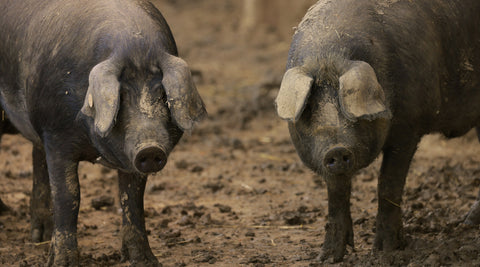
Breeding characteristics
Breeding of the Black Slavonian Pig for autochthonous dried meat products such as OINK Kulen takes 50% longer than the breeding of hybrid meat pig breeds. This difference is felt in the quality of the meat.
The meat of the Black Slavonian Pig is darker, the muscle fibers are firmer, and the percentage of meat juice release is significantly lower. The proportion of intramuscular fat is higher, which has a positive effect on the texture of the meat and the quality of taste.
Pigs raised on large farms are exposed to stress, which is reflected in poorer meat quality. The Pfeiffer pig is grown outdoors on our farm, it grows slower than its hybrid cousins, but that is why the meat is of excellent quality and has a special taste.
The Black Slavonian Pig is under the protection of the National Program for the Preservation of Autochthonous and Endangered Breeds of Domestic Animals in the Republic of Croatia. Three more domestic breeds are under protection – Turopolje pig, Banija spotted pig and tufted mangulica from Podravina.
